GTD in Apple Reminders
A look at implementing Getting Things Done in Apple Reminders with pros and cons.

I have been implementing Getting Things Done in Things for a long time. Occasionally, I like to try out other apps just to see what’s available and if there would be a big benefit to switching to something else. This time, I have been looking at Reminders, the built-in tool that Apple provides on its devices.
The first step is to set up the basic GTD lists, and for this, I am going back to basics with Contexts being normal lists and not implemented using tags. Everything to reduce drag and create an efficient and simple system.
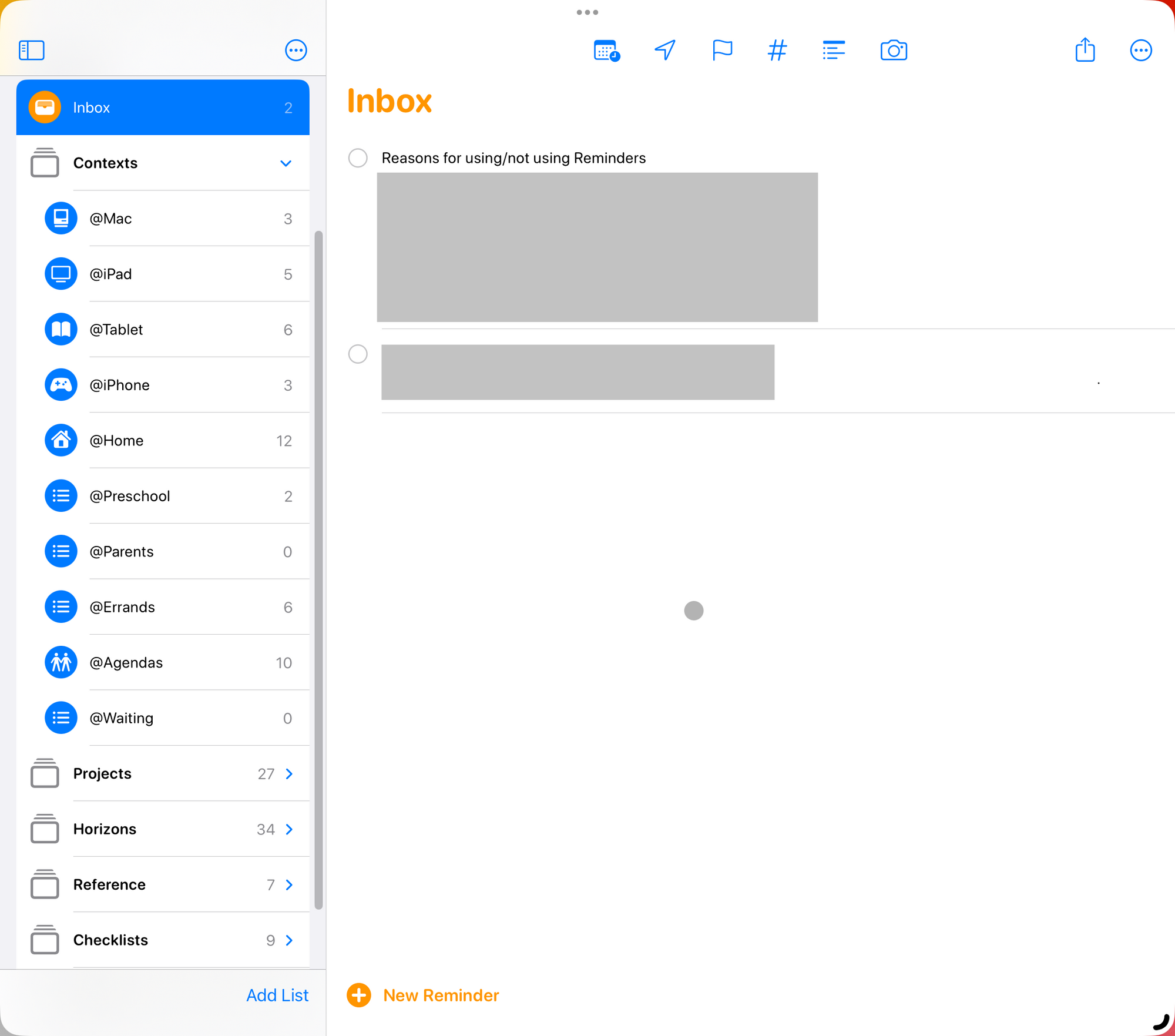
Pros and cons
Compared to Things, there are several benefits and downsides to Reminders.
No dependency on an external cloud
Being already heavily invested in iCloud, having one more thing there is not a problem. Syncing has been rock solid for all devices, including iPhone, iPad Pro, Mac and even the Apple Watch. Not having to rely on a third-party cloud without end-to-end encryption is a big benefit for me.
The Apple Watch app
The app on the Apple Watch is surprisingly useful. It allows full access to all lists in Reminders, with the possibility to add or change any field. This is a stark difference from Things, where only the Inbox and Today view are easily available on the watch. The downside seems to be that there is no built-in widget to quickly add a task to the inbox; however, that could be easily handled with a Shortcut.
Sortable lists
The lists in Reminders can be automatically sorted based on a few criteria. The best use of this feature for me has been the possibility to sort the context lists by due date. This means that if the list contains an action with a due date, it will be floated to the top. It makes it easy to quickly get an idea of which action to tackle first in a specific context.
Geofenced errand lists
Actions can have a geofence attached to them, which means getting reminders of errands to pick up at certain stores is a breeze. In this example, I will get a notification when arriving at Westfield, and clicking it will show everything I need to pick up.
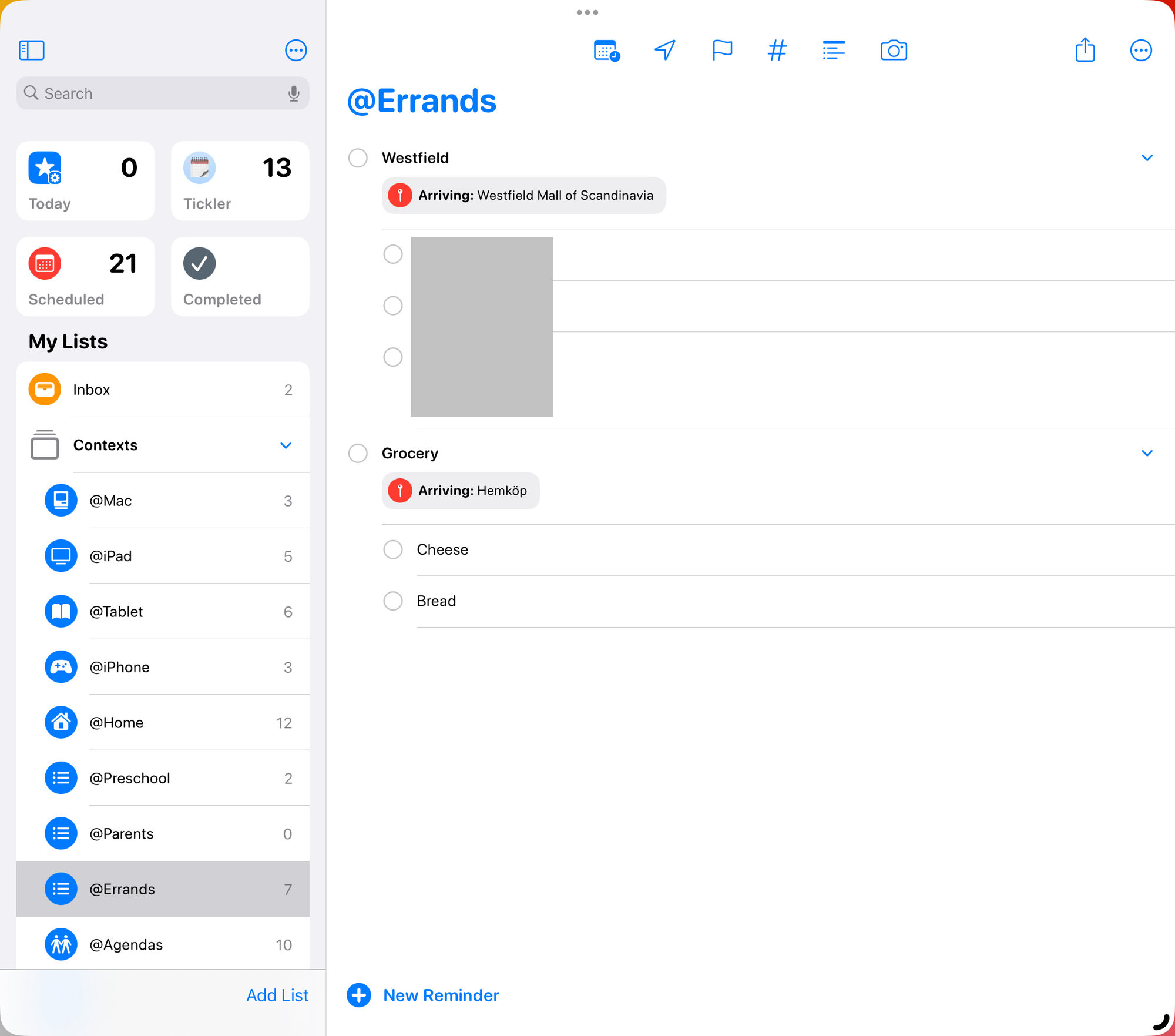
List sharing
Sharing lists is simple and powerful, and Reminders makes that super easy. My use case is to share home tasks and errands with my spouse so that we both have access to the same information.
The lists outlined in green in the screenshots are the ones shared. This provides shared contexts, project lists and someday/maybe for those areas of focus.
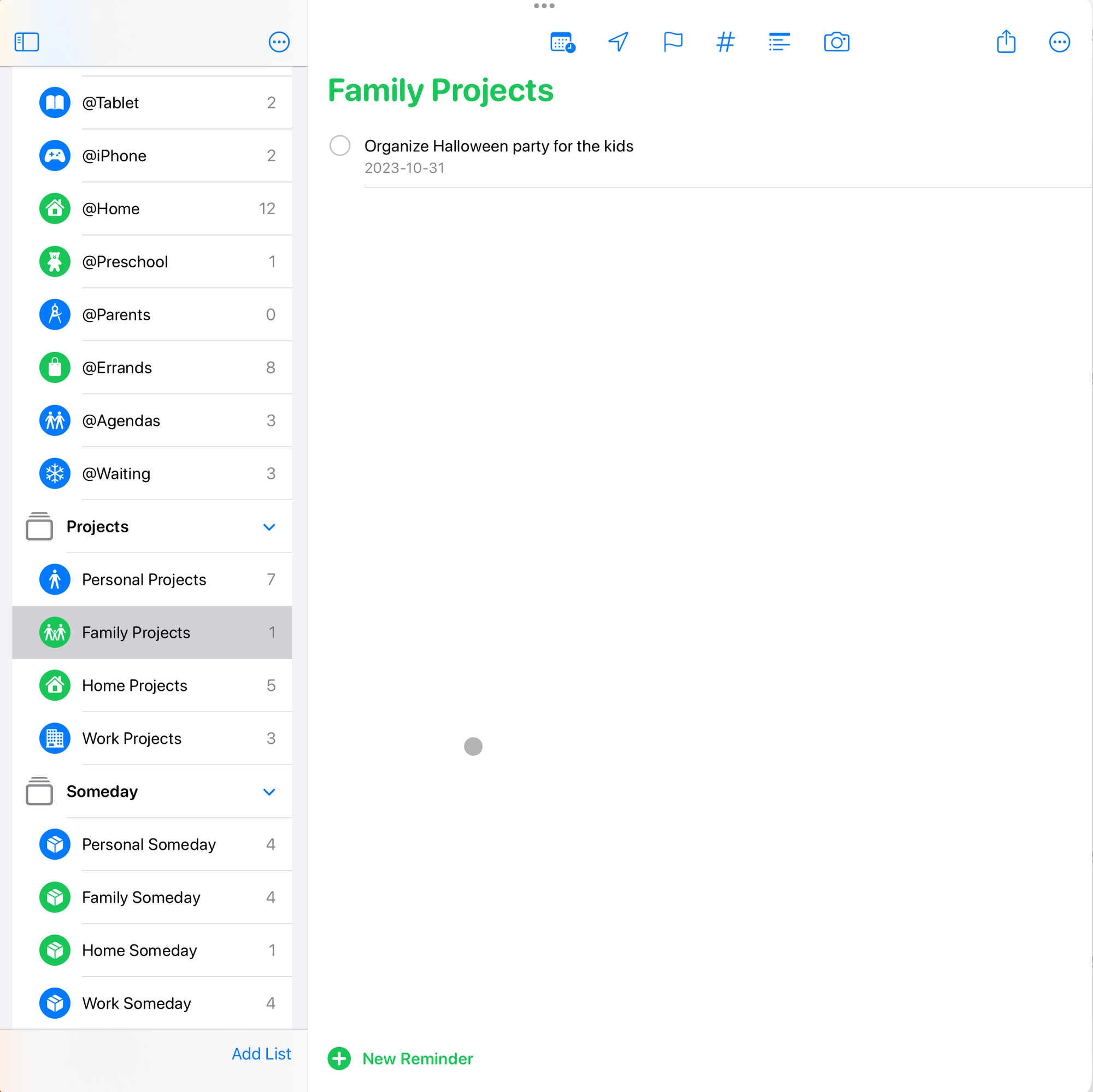
No start dates
This one is a tougher pill to swallow, at least initially. Coming from the world of Things and OmniFocus, I am used to being able to set start dates for actions and projects. Without this ability in Reminders, as it only has due dates, I have to implement a tickler system. Fortunately, my implementation is simple to set up and works quite well.
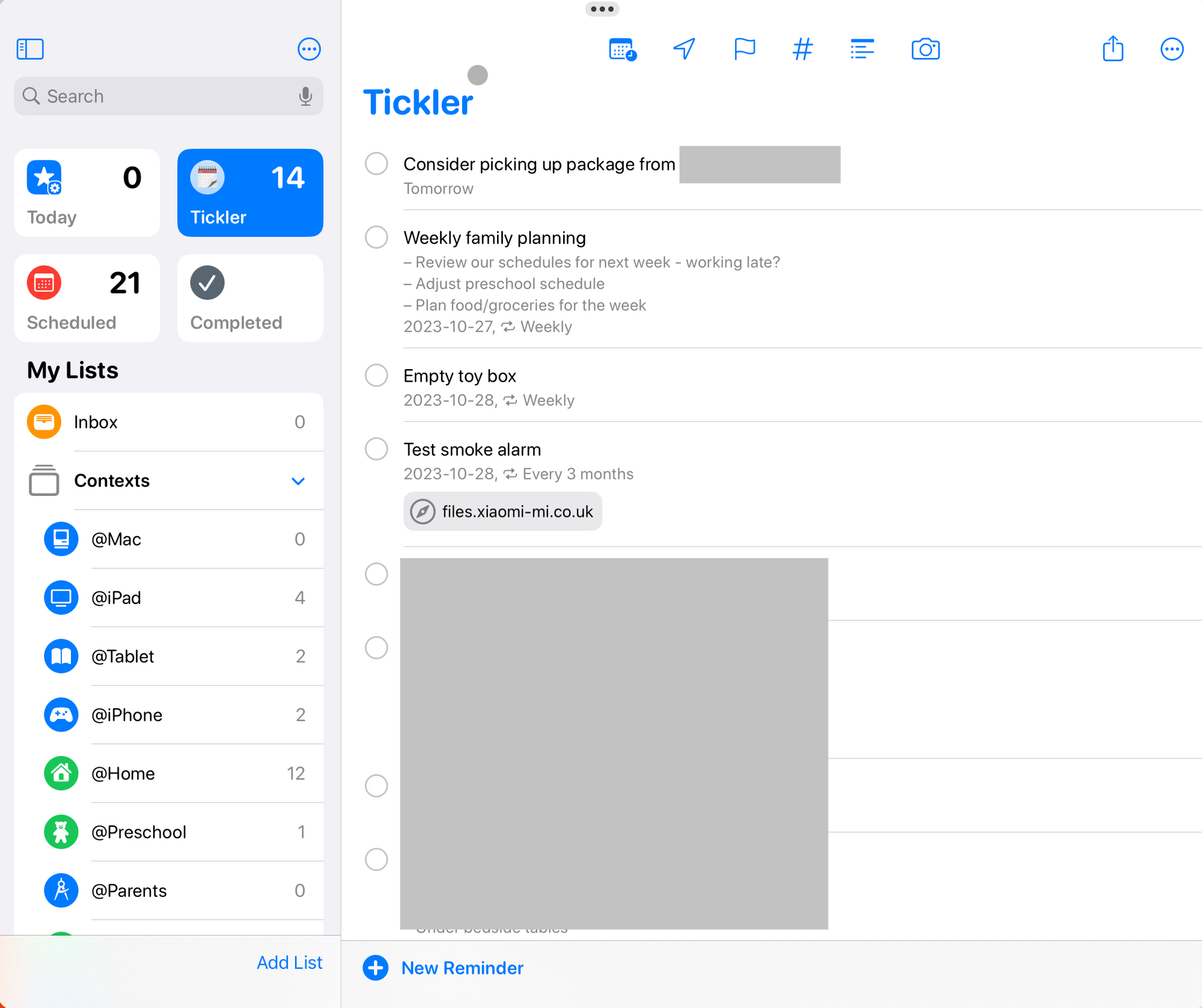
First, create a list called Tickler, and pin it to the top for easy access. Sort it by due date and start adding the things you want to be reminded of and set the due date to the specific date.
When a tickler is due, it will be displayed in the Today view, where you can evaluate it. If it is day-specific information, you can keep it for as long as needed and then just check it off. If, however, it is an action that you want to defer for another day, you can just remove the due date and drag it to the appropriate context list. If this is a repeating tickler, however, you will have to create a new next action and add it to a next-actions list, and finally tick the Ticker off as done.
No single view of the hard landscape
There is no way of seeing action deadlines together with calendar events. This means that I have to look at two different places to get the full view of the hard landscape.
Selecting and moving actions
Selecting and moving actions and projects in Things is a breeze. It supports multi-select, but in Reminders, you have to first click the three dot menu — Select Reminders to be able to select more than one. This feels very clunky and not thought through properly.
Once you have selected actions to move, dropping them in the right place in a list is another nuisance. It’s easy to get it wrong, and then the actions seemingly just disappear (they go back to the source list, but it is very unclear.
Another gripe I have with moving actions is if there is something in my Inbox that I want to save to a Reference list, there is no way of moving it to the list by searching for it. I, instead, have to manually click and find the right list.
Finicky notes filed
I use the notes field of an action to add information all the time, and it works great in Things. In Reminders, however, the notes field will always be visible, but truncated if the note is long. This can make one single action take up a lot of space.
If there are URLs in the notes field, it looks like they are clickable, but clicking them does nothing. To open a URL, you have to right-click and then select Open.
Setting up the GTD lists
Most of the lists are self-explanatory if you have an understanding of how GTD works. What I tweaked is the sorting in the context lists. Normally, the lists are sorted manually, e.g., the newest items appear at the bottom. The context lists are better sorted by due date, which provides the benefit of showing all actions that have a due date at the top.
Another special list I have created is the Today view. While there is a built-in today view, this smart list, includes flagged items as well.
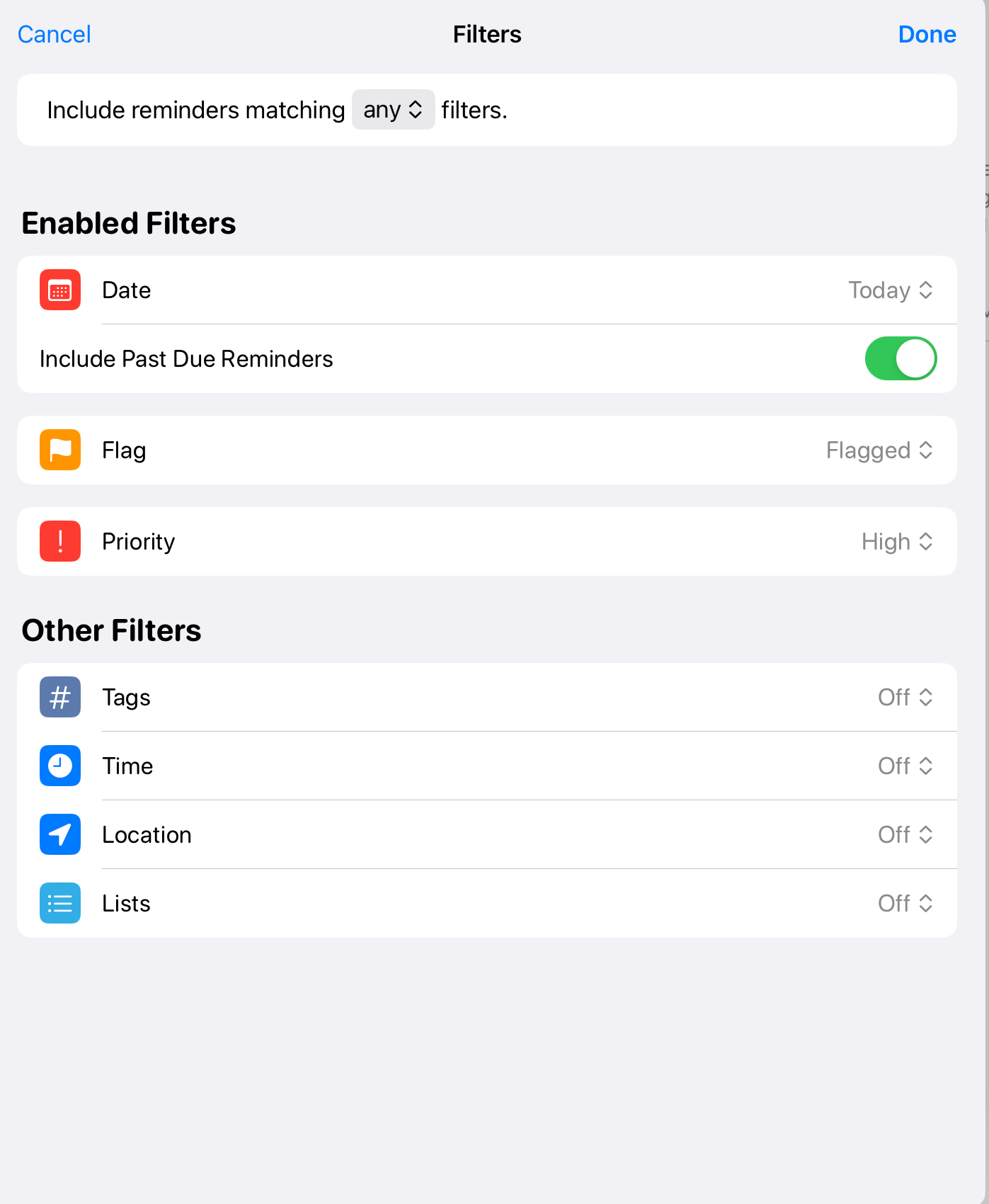
Conclusion
The big question is, will this replace the setup I have in Things? For now, probably not. It comes with numerous benefits over Things, but most things are just a bit more difficult to do in Reminders compared to Things, like moving actions, no start dates and inflexible note fields.
If you are starting from scratch, however, Reminders is a great alternative, especially if you are already in the Apple echo system. Having full access to the lists on the Apple Watch, for instance, is surprisingly useful.